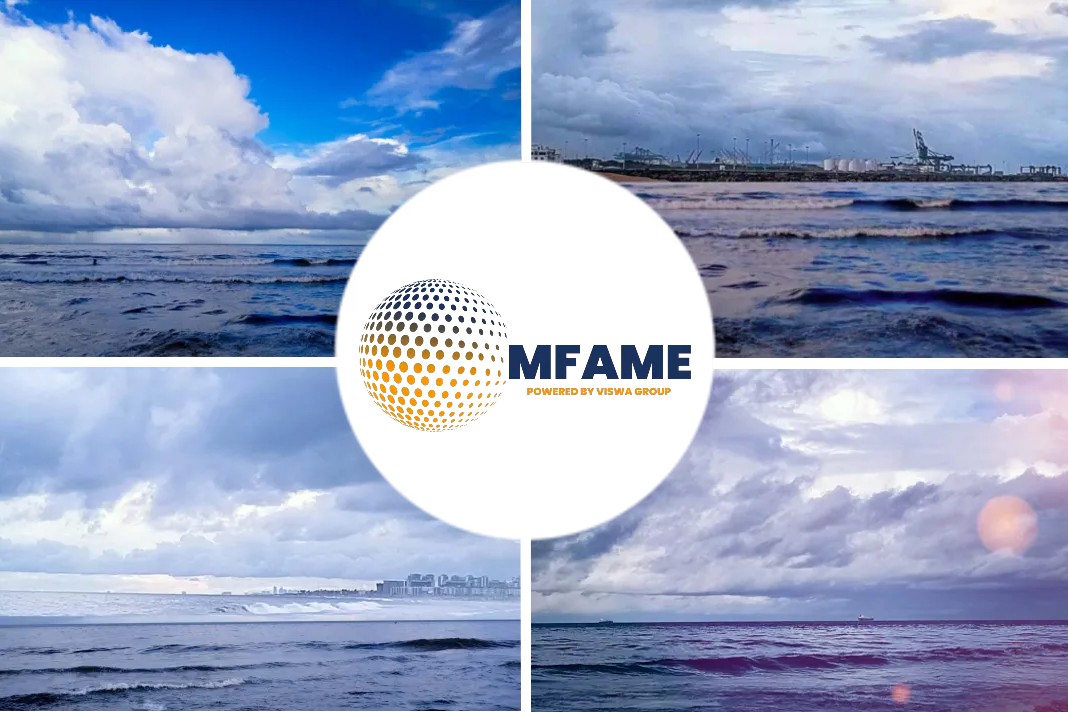- When running electro chlorination (EC) treatment in ballast water management systems (BWMS), you need to cool the power system.
- The power system converts shipboard AC into high current DC, which EC requires. KraftPowercon has developed their first air cooled power supply especially designed for BWMS.
- Electro chlorination ballast water systems are proving very popular with tanker operators, but one complexity is that the power supplies that generates the direct current also generates heat that needs to be removed.
- One way to remove the heat is to use cooling-water, which also has its own complexity, requiring pumps, protection from the vibration of the ship, and connection to the shipboard water supply.
- A failure in the system might make the whole ballast water system un-operable, which in turn might mean that a ship is unable to load, or un-load, cargo.
A recently published article in the Tanker Operator deals with the way to cool the rectifiers using air thus making the systems less complex. This is developed by KraftPowercon of Sweden. This makes electro chlorination ballast water systems more viable in general.
Effective protection for Water cooled systems
Water cooled systems need protection from the vibration of the ship, using dampeners – while air cooled systems don’t. Dampeners are like shock absorbers on a car, stopping the vibration of the ship transferring to the unit.
But this adds extra cost and complexity to the installation, because it means that every connection to the unit, including pipes and cables, needs to be flexible. Dampeners are also expensive.
Robust air cooled systems
Air cooled systems, in contrast, are robust enough not to need dampeners at all.
The air cooled system system was developed after some customers found they were not able to use water cooling for their rectifiers for various technical reasons, says Göran Stenmark, Global Product Manager with KraftPowercon Marine division.
Water cooling has greater capacity to absorb heat, but air cooling “can be much easier to install and set up,” he said.
“You don’t have to hook it up to the water-cooling system on the vessel, you just make sure you have enough air – and you’re good to go.”
“We had to spend a lot of engineering hours, thoughts and extensive tests when developing and designing this unit that will last, even though it is really vibrating hard,” he says.
KraftPowercon’s rectifiers are available as part of ballast water treatment systems from seven different suppliers – De Nora Water Technology, Envirocleanse, ERMA First, Evoqua, RWO Veolia, TeamTec OceanSaver and Wartsila.
Killing microbes
The process of electro chlorination systems is that An electric current is run through a cell containing flowing sea-water. The electrical energy breaks down salt (sodium chloride) in the seawater, which then reacts with water to form hydrogen and sodium hypochlorite.
The sodium hypochlorite is then passed into the ballast water tanks where it will kill any organisms that passed through the filter. The small amounts of hydrogen are vented out with fans.
Electro chlorination systems will work on any kind of vessel, but tend to turn out to be a particularly good fit for larger sizes of vessels, he says.
ECKraft
The air-cooled rectifier, called ECKraft, is designed to work at ambient temperatures of up to 55 degrees C, enough for Saudi Arabia and Qatar, both of which have seen maximum temperatures in the lower 50s.
It meets the “IP44” standard for protection against intrusion, dust, accidental contact, and water, which means it is protected against splashing of water, and physical objects up to 2.5mm, such as wires and screws.
The output can be up to 240 volts and up to 15,600 Amps DC.
The system has been designed with redundancy – it is built up of a number of smaller power supplies working together, and systems are normally not running on 100 per cent load. So one module can fail without bringing down the whole system.
ECKraft has been type-approved by the certification bodies DNV GL and will be approved by the Korean Register in the first quarter of 2020. This type approval confirms that the product meets all requirements from the New IMO G8, IACS E10 Rev 7 and USCG.
KraftPowercon
The rectifier is designed and manufactured by the KraftPowercon team in Sweden.
KraftPowercon manages all of the testing and type approval process independently, making it much easier for companies to include in their Systems. They just need to submit pre-prepared documents to their class society, Mr Stenmark says.
With the same company doing manufacturing and managing testing, also makes it easier to make any modifications.
KraftPowercon specialises in power systems for harsh environments, including making units for electrostatic emission cleaning systems in heavy industry, and gas turbine back-up power systems on offshore oil and gas platforms.
Kraft PowerCon has been supplying power systems since 1935, and been in the marine business for 20 years. It focusses on energy conversion systems, including low voltage high current systems (as in this case), low current but high voltage systems (as required by the electrostatic precipitators, cleaning air from chimneys). A third application is uninterruptible DC power systems for the oil and gas industry.
It has a global service network to fix any problems.
The company got involved in ballast water rectifiers, after a background selling power supplies to a number of water cleaning installations.
Did you subscribe to our daily newsletter?
It’s Free! Click here to Subscribe!
Source: Tanker Operator
















